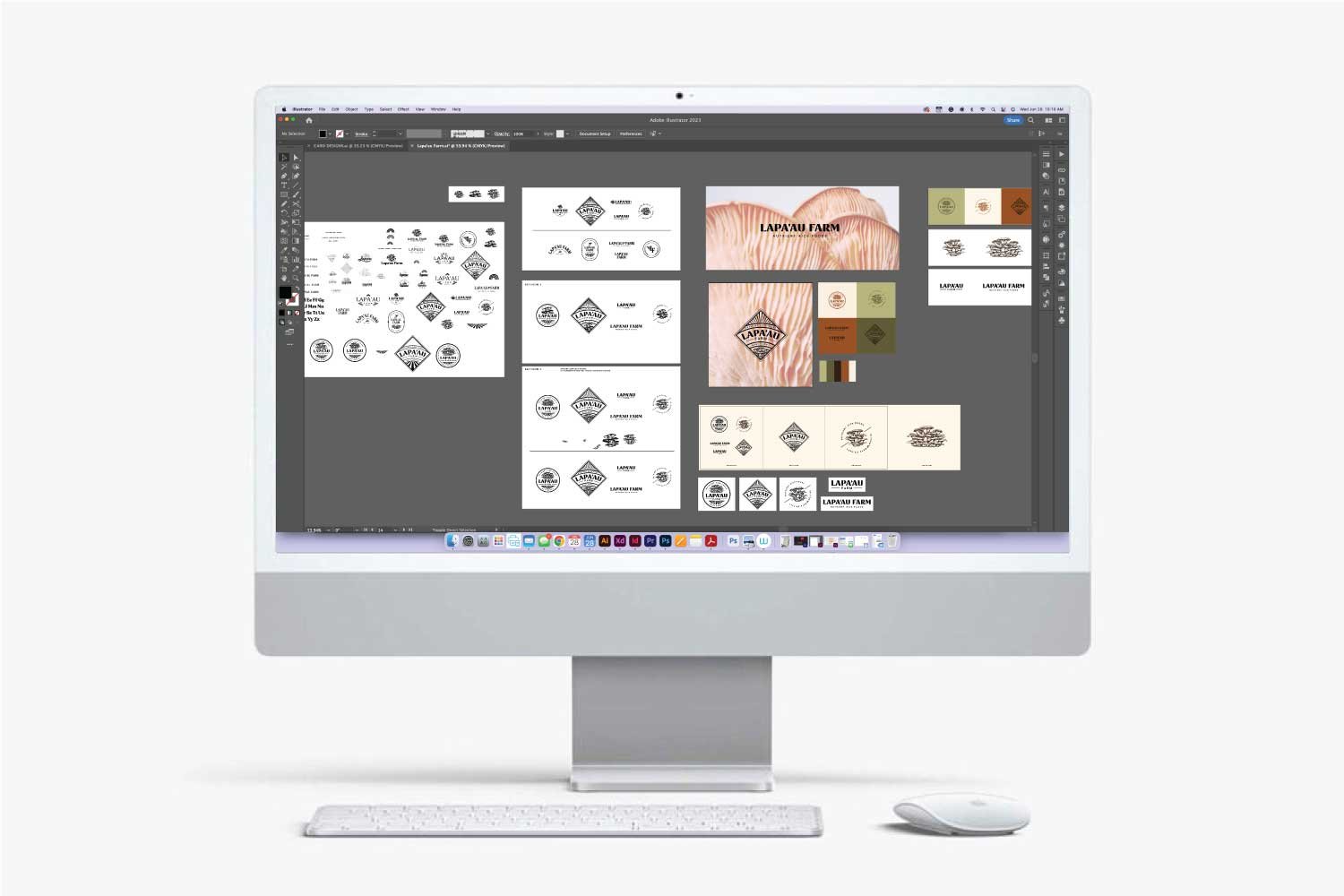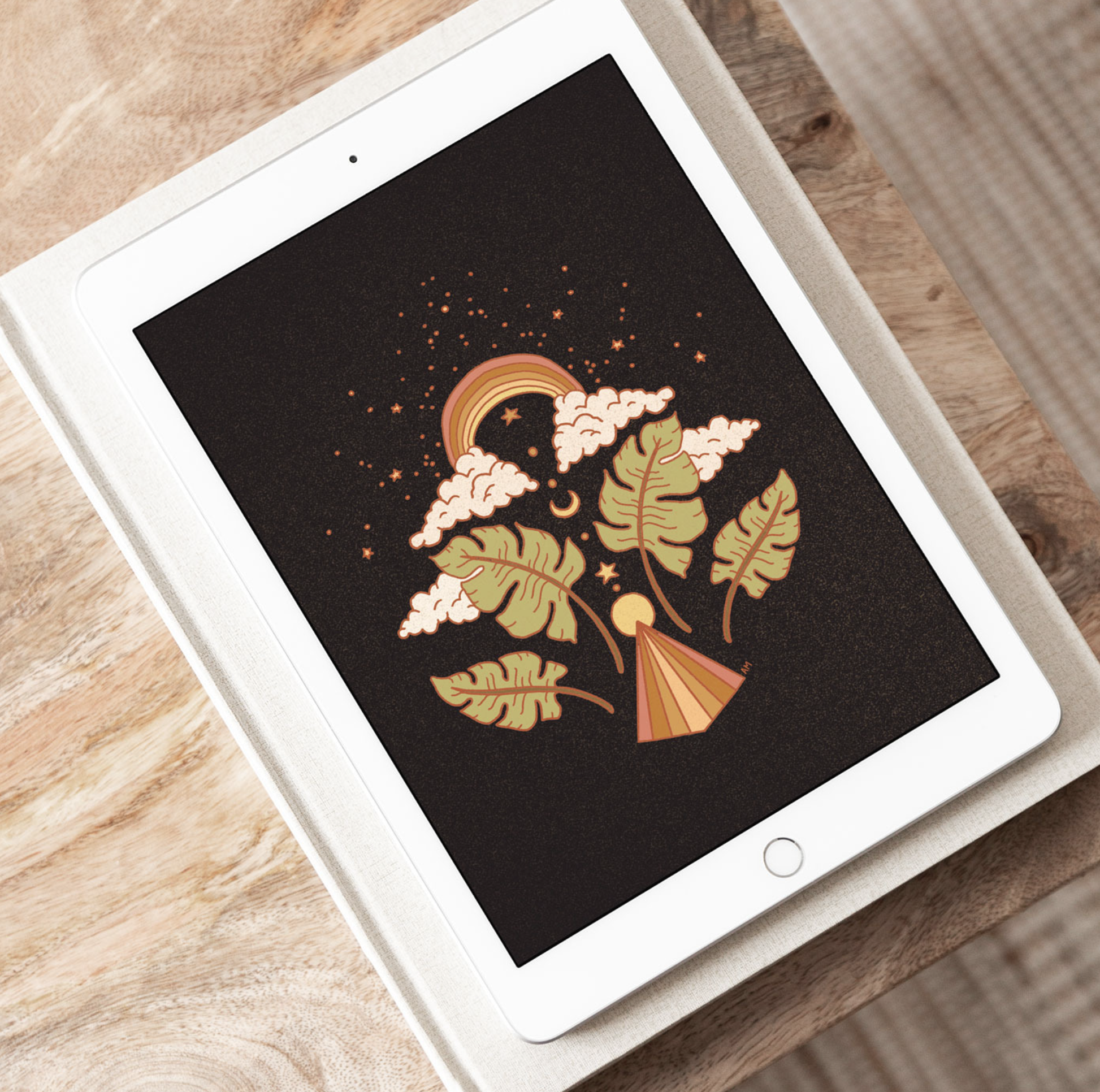The Creative Process Behind a Visual Identity
What is a Visual Identity?
You may be wondering what the difference is between branding, brand identity, branded materials…etc. Branding is an umbrella term for many aspects of a brand. Visual identity - which is what I focus on, falls under the design of how your brand is represented visually and is aligned with your brand values and target market.
Visual identity involves a process of research, sketching, rendering, and prepping final deliverables for my clients. I’m going to walk you through my entire visual identity process from start to finish!
The Realign Phase
The word “realign” is a perfect explanation for what this stage entails, and how it helps my clients gain clarity on what they really want. When I onboard a client, I first send them an in-depth questionnaire about their business. I ask them questions about their vision for their branding, what their goals are, how I can help them bring their vision to life, and much more. Most importantly I want to understand how I can help them in their business.
Designer Tip: Always remember to ask a LOT of questions so you can understand exactly what your client needs. It will make you look professional and show you care about their project. They want to feel taken care of and important to you!
Sometimes I will suggest specific branded materials to add to their visual identity package if there is something I can design for them that would make their job easier. This might be a presentation template that they need for their clients, or social media styling so they can focus on content rather than designing from scratch every time.
Once I send through the proposal and the first payment is made, I get started on research and collecting inspiration for their branding! This is where Pinterest comes in (because it’s perfect for collaborating!). I will take time to review their questionnaire and start pinning photos, other logos, branding, packaging, patterns - anything that feels aligned with their vision and what I am inspired by.
I make sure to get approval for the creative direction from my clients before moving into the exploration and design phases. When I get the green light on the inspiration board, then the fun begins!
Sketch Exploration
This stage is obviously my favorite! It’s where I get to dive into exploration and create something beautiful. The first step of designing is understanding the vision for my client. I usually take buzzwords from the questionnaire that pair well with the creative direction from the Pinterest board to create the framework for what colors, type pairings, and other visuals I will use for the visual identity.
I always start in Procreate on my iPad to explore various options. I try to avoid referring back to the Pinterest board too much during this stage so I can push my own creative boundaries and develop something that is completely new and unique. This allows my mind to think freely and explore as many creative avenues as possible for my client. Sketching is such a great way to push yourself creatively. There are no constraints or fancy tools - just you and the white space. An infinite canvas of opportunity!
I often incorporate illustrated elements in my logo designs (like Lapa’au Farm), and I draw those on a large scale in Procreate to capture all the details. In the example below, I drew a custom mushroom for their logo
Designer Tip: The more details you have in an illustration, the larger your canvas should be in Procreate. I like to draw my detailed illustrations on a 10x10 canvas at least. Then when I image trace it in Illustrator, the details will come out more clearly when it is turned into a vector shape!
Design
Once I have my concepts and illustrations, I pull everything into Adobe Illustrator to start exploring type pairings and color options. I always design everything in black and white first so I can focus on the composition of the type and other elements. Starting with color can be distracting - drawing attention away from the details and how they are working together.
My artboards in Illustrator are a combination of the creative process from start to finish. I like to jot down all of the keywords, inspiration from the client, and other ideas so I have everything in my .ai working file. Just like when I’m sketching in Procreate, I make sure to explore as many options as possible before I land on something that works. Some projects have more concepts than others - it really just depends on what I’m able to come up with and how soon I feel strongly about “the one”.
Once I land on something that is completely aligned with my client’s vision and goals, I mock up a presentation deck that outlines the deliverables. I include the primary logo, other variations, color palette, typography, mockups, and any other branded materials included in the project scope. I send it off to my client and wait for feedback!
Designer Tip: Including mockups in your presentation is a great way for your client to visualize how everything works together. If your client runs a farm, mock up their logo on a t-shirt that could be worn by their staff. Help them see how their visual identity can be used to their benefit. Also, you can use the mockups you create for your portfolio!
Revise
Revisions are always included, depending on how complex the project is. Here is an example of how the mushrooms evolved through 2 rounds of revisions with Lapa’au Farm. The first one started off very simple, then I explored another option with dark caps, and the third option was the final and approved concept that we ended up moving forward with for the final visual identity. Revisions are not always needed, but in this case, we were very happy with the final concept after collaborating on ideas and working through the suggested changes!
Finalize
Once everything is approved after the revisions are made, I can finalize the logos and make any needed updates to the brand guide. The brand guide is a pdf file that walks through the visual identity and how to use the logos, colors, and typography consistently moving forward. I share a Google folder with my clients that they can access after I upload the deliverables. I make sure to include pngs, pdfs, and vector files of each logo variation and any other icons, or branded materials for them. During the off-board process, I make sure to review anything they may have questions about. I also send through a file type and color code cheat sheet for them so they understand what file types to use for web, social, or printing.
I stay in touch with a lot of my clients and work with them again in the future! This is one of the perks of finding a designer you really love working with because they will always be your go-to when it comes to design. I love the clients I work with and always want them to succeed with what we create together. It’s my goal to keep inspiring others through design for their business so they can keep pursuing their passions!
Interested in working together?
My books are always open for new and established businesses that are wanting to develop a logo or visual identity, package design, or custom illustrations! Sound like you? I offer free discovery calls where you can talk through your ideas with me!
Written by Ashley Munson of Libra Collective
Hey! I’m Ashley - founder and designer of Libra Collective. I help businesses develop visual identities, create custom packaging solutions for their products and tell stories through illustration. Interested in working together? Check out my portfolio and design services or inquire with me here!
The Libra Newsletter
Get an inside look at my behind-the-scenes projects, new product launches in the digital shop, and how I help brands and creatives thrive through design!
The Project Archives
Check out my portfolio of previous branding, packaging, and illustration projects.
Follow me on Instagram
@ashleymunson
More from The Libra Journal
Want to work together?















